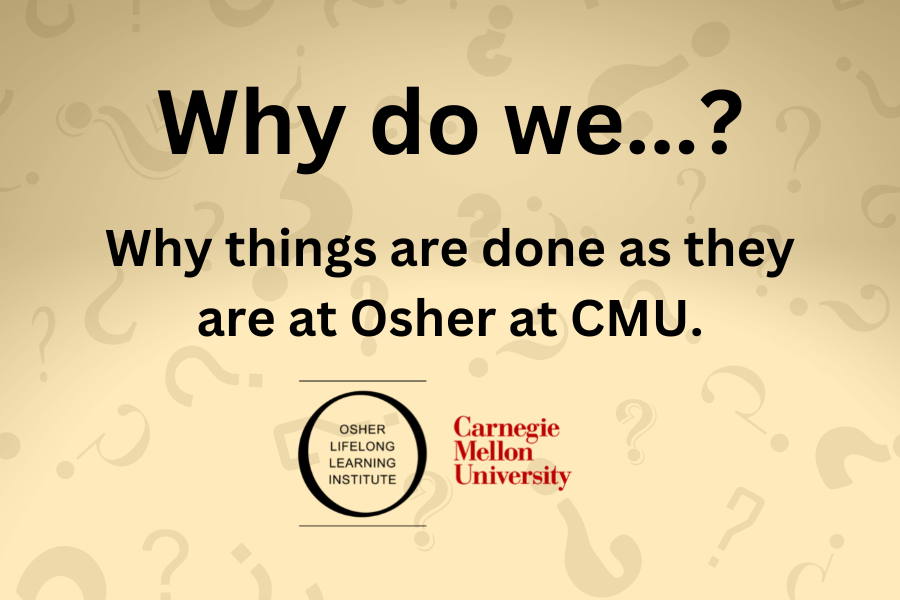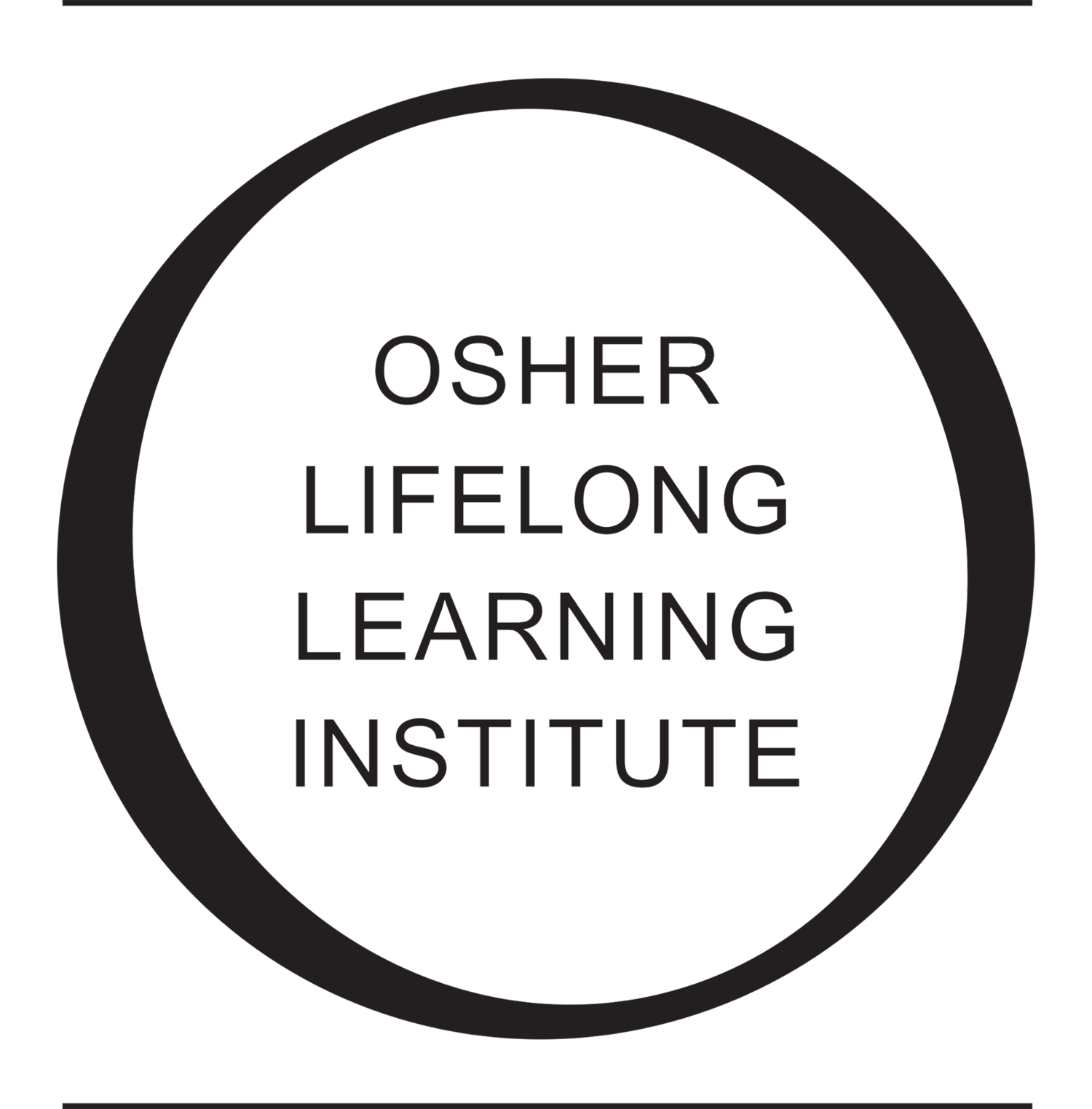
Why Do We.....Have Course Enrollment Limits?
By Lyn Decker / Registrar and the Osher Staff
Every now and then one of our members will contact the office asking why we do things in a certain way. An example of this is: “Why do we have surprise registrations rather than holding them on a specific date at a specific time?”
To provide members with a better understanding of why things are done as they are, the staff and I will share the explanation for why things are done as they are. If you have a question, please use the suggestion box on the Osher website and we will answer in order of submissions.
Sincerely, Lyn Decker / Registrar and the Osher Staff
Why do we...
Our second “Why do we….?” comes from a member who would like to know why we don’t hold hybrid courses - courses that are simultaneously held on Zoom and in person. She indicated that a lot of our members would like it if we did.
Answer:
This is a great question because it comes up so often. Our top priority is to have as many students as possible enrolled in a course and to not disappoint anyone. While this is a wonderful goal, we have two main constraints that control our course enrollments.
The first is that it is the study leader’s call as to how many students they feel comfortable teaching at a time. The second answer depends on how many seats the assigned classroom can hold.
We now have four classrooms in the Osher Learning Center. Classroom A has 35 seats and B has 50. When the rooms are combined, we have space for 95. The Olmstead Activity room holds 15 to 20 students, depending on the type of course, and the Hawkins Conference room holds 12. The smaller courses are automatically assigned to the two smaller rooms. Because we don’t know how much interest a course will have with our members, all the other courses are randomly assigned to rooms A and B with their registrations capped at 35. After registration, the course with the larger enrollment is then assigned to classroom B and the number of students is then increased to 50. This is why we ask that everyone goes onto the waiting list, if offered.
If a course has a significant number of students on the waiting list, we ask the study leaders to either increase their enrollment numbers or offer a second or even a third course. More times than not, our study leaders agree to do so.
So, what about the Zoom courses? Online courses can take an unlimited number of students so why should it matter if there are 20 or 200 students in a course? Well, as it is with our in-person courses, our Zoom Study Leaders are the ones that make the call as to how many students they want to teach at one time. More times than not, it will depend on the type of course they are teaching. As too with the in-person courses, if there is a waiting list, we’ll ask the Study Leader to increase their course size.
To also help the waiting list situation, we hope that if someone won’t be able to attend at least 75% of the class dates that they will project ahead and drop the course to make space for someone eagerly waiting to get into the course. It isn’t fair to the Study Leader or those on the waiting list for your seat to go empty.
Finally, if you happen to not get into a course and are willing to go into it after the first week or later, contact the office to see if there is an empty seat that you can fill.
If you’d like a question answered, please submit it in our suggestion box on our home page of our website.
